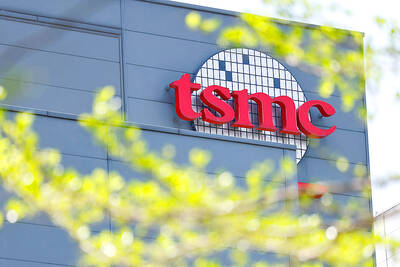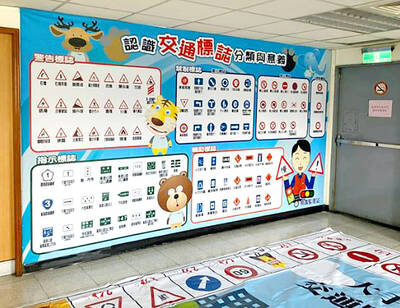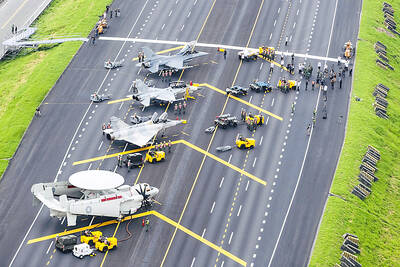IBM Corp, which spent US$5.2 billion on research and development last year, for the first time has cracked a simple digital code using a computer built on individual atoms. The advance, in a field called quantum computing, was reported Wednesday in the journal Nature.
The largest computer maker said the research proves certain techniques that may be useful as scientists develop quantum computers, though it isn't a breakthrough by itself, the technology allows atomic-scale computers to be used commercially. Today's fastest supercomputers would take years to factor the kinds of large numbers used in modern cryptography.
In 1994, AT&T Corp researcher Peter Shor theorized that a quantum computer, because its processors are so tiny, could operate at the speed needed to factor such numbers and break codes quickly. In IBM's research, a quantum computer factored the simple number 15 -- a step toward breaking down the factors of much larger numbers used in encryption. In solving Shor's cryptography problem, IBM used pulses of radio-frequency energy to manipulate atoms so their nuclei would spin in a controlled manner. Nuclear magnetic resonance, the same technique used as a hospital diagnostic tool, helps measure the spin.
IBM synchronized the spin of seven atomic nuclei in billions of molecules in a test tube to demonstrate Shor's Algorithm by calculating the factors of the number 15. The factors are 3 and 5.
Quantum computing, though not designed for such tasks as word processing, is well suited to massive calculations.
"It's definitely a step forward," Shor said in an interview.
"It happened quite a bit sooner than I thought. They were fairly clever."
Spinning a nucleus upward represents the binary 1, and a downward spin the binary 0, creating the basics of digital computing. For the experiment, IBM custom-designed molecules containing five fluorine and two carbon atoms.
Because a quantum computer operates on an infinitesimal scale, its speed would be sufficient to factor large numbers used in today's cryptography. Though conventional cryptography would be rendered obsolete by a quantum computer because it could easily break the code, such a device could also create higher-level encryption that would be impossible to crack, said Nabil Amer, manager of IBM Research's physics group.
The task now for quantum computer researchers is to find a new way to manipulate and measure the atoms, because nuclear magnetic resonance probably won't be useful beyond the spinning of 10 atoms, Amer said.
IBM researchers and other scientists have started experimenting with techniques to control the spin of 1,000 atoms, for example. The challenge is to decide whether to use superconductors, or materials that easily conduct electrons, or semiconductors, which don't, Amer said.

EUROPEAN TARGETS: The planned Munich center would support TSMC’s European customers to design high-performance, energy-efficient chips, an executive said Taiwan Semiconductor Manufacturing Co (TSMC, 台積電), the world’s largest contract chipmaker, yesterday said that it plans to launch a new research-and-development (R&D) center in Munich, Germany, next quarter to assist customers with chip design. TSMC Europe president Paul de Bot made the announcement during a technology symposium in Amsterdam on Tuesday, the chipmaker said. The new Munich center would be the firm’s first chip designing center in Europe, it said. The chipmaker has set up a major R&D center at its base of operations in Hsinchu and plans to create a new one in the US to provide services for major US customers,

The Ministry of Transportation and Communications yesterday said that it would redesign the written portion of the driver’s license exam to make it more rigorous. “We hope that the exam can assess drivers’ understanding of traffic rules, particularly those who take the driver’s license test for the first time. In the past, drivers only needed to cram a book of test questions to pass the written exam,” Minister of Transportation and Communications Chen Shih-kai (陳世凱) told a news conference at the Taoyuan Motor Vehicle Office. “In the future, they would not be able to pass the test unless they study traffic regulations

GAINING STEAM: The scheme initially failed to gather much attention, with only 188 cards issued in its first year, but gained popularity amid the COVID-19 pandemic Applications for the Employment Gold Card have increased in the past few years, with the card having been issued to a total of 13,191 people from 101 countries since its introduction in 2018, the National Development Council (NDC) said yesterday. Those who have received the card have included celebrities, such as former NBA star Dwight Howard and Australian-South Korean cheerleader Dahye Lee, the NDC said. The four-in-one Employment Gold Card combines a work permit, resident visa, Alien Resident Certificate (ARC) and re-entry permit. It was first introduced in February 2018 through the Act Governing Recruitment and Employment of Foreign Professionals (外國專業人才延攬及雇用法),

‘A SURVIVAL QUESTION’: US officials have been urging the opposition KMT and TPP not to block defense spending, especially the special defense budget, an official said The US plans to ramp up weapons sales to Taiwan to a level exceeding US President Donald Trump’s first term as part of an effort to deter China as it intensifies military pressure on the nation, two US officials said on condition of anonymity. If US arms sales do accelerate, it could ease worries about the extent of Trump’s commitment to Taiwan. It would also add new friction to the tense US-China relationship. The officials said they expect US approvals for weapons sales to Taiwan over the next four years to surpass those in Trump’s first term, with one of them saying